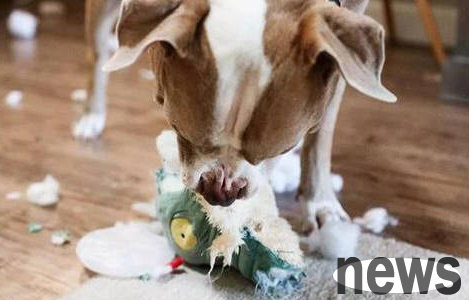While we hope we will never have to deal with a severely injured dog, if we do find ourselves in this situation, it is best to know how to best help. In order for you and your dog to be safe and calm, there are some important steps to take. Remember...
While we hope we will never have to deal with a severely injured dog, if we do find ourselves in this situation, it is best to know how to best help. In order for you and your dog to be safe and calm, there are some important steps to take.
Remember to breathe, don't panic

Emergencies can be overwhelming. The first thing to remember is to take deep breaths, try not to panic, and take some time to evaluate the situation. For example, if you are next to a road or rail track, you don't want to cause an accident due to a crash. If the dog is trapped in cold water, don't chase it in—this can usually cause the dog to go out and the owner to get in trouble. Anyway, your intention may be to help, but if you put yourself in danger, it is not helping yourself or your dog.
Nearly injured dogs It is not uncommon for severely injured dogs to fight back fiercely. Even though they are usually calm and gentle. But its pain, elevated adrenaline levels and fear can cause dogs to exhibit unpredictable behavior.
It is best to be careful to approach the injured dog. Rushing in can scare them, especially if you are not a familiar face. Make sure you look closely at the dog's body language. If it feels threatened, Don may crouch down, place his ear flat on his head and his tail between his legs, and he may expose his teeth, growl, bark, stare at you, or have whale eyes (shown on the whites of his dog's eyes).
If you are worried when you are approaching, you can use obstacles like a pillow or a car trunk lid. Always move forward in a quiet, calm way, without direct eye contact and speak in a soft and soothing tone.
If the dog is very aggressive, don't put yourself at risk. Besides that, it requires extra help you can get. If you can’t get close, try to keep it under control and keep its surroundings as safe as possible while waiting for more help.
When is it suitable to wear a mouth cover?
If you can touch the dog, but it becomes aggressive when you try to move or check it, putting a dog's mouth on it may make the situation safer.
Dog mouth cover is only suitable in certain situations. This is not recommended if the dog vomits, has breathing problems, has a chest injury or has a short nose, just like the short-headed breed.
If you don't have a gutter or it's not the right size, you can try making one. Stockings, tie, bandage or gauze are all OK. Tie a knot in the middle of the fabric and wrap it around the dog's mouth and bring it under the chin to tie it behind the ear. Make sure it doesn't tighten too tight to hinder breathing; dogs usually wear more when they are in pain or pain
Sometimes gently covering the dog's head with a towel or blanket can calm it down and let you check it out.

How to check if the dog shows signs of injury?
If you are evaluating the injury of your dog, you must be very careful. Try not to move it too much, especially if it has injuries to its head, neck, or back.
If you see any signs of bleeding, use a clean towel or other suitable material to apply pressure to the wound to stop bleeding. If blood begins to ooze, place another layer of fabric on the existing fabric. Don't uncover the first bandage as this may cause more bleeding in the wound. Keep the wound area elevated if possible.
Please do first aid only if you are sure what you are doing, guessing that it may cause more problems for the dog. Consult your veterinarian before using antibiotic ointment; dogs tend to lick their wounds and may get poisoned if ingested. Getting them to the veterinarian safely and quickly is the most important thing.